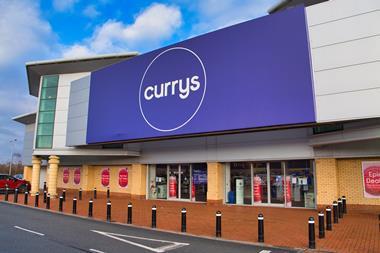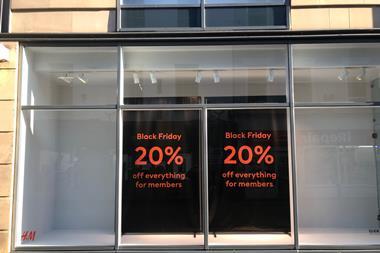As retailers increasingly look at overseas expansion, standardising store technology certainly has its benefits. Yet, finds Alison Clements, local knowledge and support can still be crucial
Tesco set the benchmark for deploying international store technology, making the whole process sound like child’s play. Turkey became the first Tesco territory to replace legacy systems in the acquired Kipa chain with Tesco in a box store operations systems.
It made sense to replicate the same business processes and systems architecture globally as Tesco grew into the US, Czech Republic, Slovakia, Malaysia and Thailand.
Fellow UK retailers liked the logic and potential cost-efficiency of standardisation too. Halfords opted for a similar pre-packaged system as it expanded into Eastern Europe in 2007, and in January last year DSGi announced plans to transform its store and e-tail operations in the UK and on the Continent onto a single, standard platform for till, e-tail and back office functions.
But over time UK retailers – particularly those without Tesco’s or DSGi’s scale – have discovered that the sheer complexity of setting up abroad makes IT standardisation incredibly challenging. And even Tesco hasn’t been immune to the tangle of different taxation systems, refund laws, currency issues and cultural anomalies such as how local banks handle credit.
“We’ve all got scars,” says Richard Dodd, who was international operations director for Tesco until 2007, and is now BT Expedite chief technology officer. “Of course retailers setting up in new territories should build an overseas operating model based on UK best practice. And they should look into the potential benefits of standardising software and hardware in systems architecture design as they expand. But the reality is often very different when you get there.”
US taxation rules are hideously complex. In China there are strict regulations around shelf-edge labelling. In Japan many tills are split into two separate parts, with one till operator scanning and another taking payment, should incoming retailers stick with that or rip tills out? In the countries of Central Europe and South America there is fiscalisation – complicated tax structures governed at a local level – which means retailers’ EPoS hardware and software must pass unfathomable tests to ensure the local government will have total visibility of sales, promotions and tax payments. “The compliance process can cost hundreds of thousands of pounds and of course holds up the opening of stores, which is hugely frustrating,” says Dodd.
He believes the head office functions of finance, stock, merchandising and customer relationship management (CRM) can cope with being standardised in line with UK requirements, “but when you get into the shop itself things get a bit messy. You’ve got to think about language on screens and till receipts, EFT [electronic funds transfer] and also on-site training and maintenance”. The alternative, then, is a local EPoS system that can be easily connected into UK head office systems. Finding local suppliers for EFT can ease another headache.
Freelance consultant Cathy McCabe agrees local systems have their place. “‘Tesco in a box’ is the utopia many retailers aspire to, but in reality many players are just dipping their toe in the water internationally, perhaps opening only a handful of stores in each country, so needn’t invest in a global system and all the additional trappings of configuring it for each country,” she says.
Another option is to install a basic system with a common language and hope all international staff can speak that language. “Or you can spend time reconfiguring systems into different languages as and when that’s required,” says McCabe. “More systems are becoming available with this option today.”
Retail Directions supplies store systems for Body Shop in Europe and Kookaï in Australia, and managing director Andrew Gorecki says demand is growing for simple, small-scale systems that can be easily implemented but provide high levels of control around data collection and management.
“With the UK in turmoil, retailers are seeking growth via the internet and by going into new overseas markets,” he says. “Franchising is popular, but there still needs to be control of information for the franchisee and the head office.” Reliable systems can help maintain margins, reduce inventory and improve sales. “Today retailers need systems that can be easily configured to any particular language and are low maintenance, for instance able to re-align themselves after a power cut,” he adds.
Retail IT suppliers are better geared for international EPoS set-up now compared with five years ago, says Cybertill managing director Ian Tomlinson. “Everyone is making headway on the international playing field. At Cybertill we’ve now solved the US taxation system, which gives us a useful selling point.”
Cybertill offers a hosted “Software as a service” EPoS and e-commerce system on one central infrastructure, which suits the needs of luxury brands opening global flagships. Information about product sold in New York, Paris and Toronto, for example, comes from a data centre in England and sales data returns there. “System updates can be done remotely and very easily, as long as time zones are considered,” says Tomlinson.
McCabe warns remote monitoring, maintenance and e-learning for international EPoS relies on regions having robust communications, which is not always the case. She says another challenge is size of hardware. “Space is often limited as many retailers are opening in cramped concessionary spaces in Asia, so big tills with lots of add-ons won’t fit. Hand-helds are of interest for data collection for this reason.”
International growth is so high up the corporate agenda for large retailers that they’re only interested in systems architecture that will be able to handle scalability and configuration to new languages, says Richard Goodall, sales and marketing director at EPoS supplier PCMS. “They want to know how CRM and e-commerce management systems would cope if they began trading in Italy or Norway,” he says. “They also want speed of implementation, so PCMS’s network of international distributors helps iron out problems quickly in different countries.”
Suppliers such as Fujitsu, Oracle, SAP and IBM are working fast to streamline the experience of setting up abroad. As BT Expedite head of managed services Peter Nixon puts it: “We’ve learnt that you can’t pull everything out of a box, but up to a certain level, pre-packaged technology can work. And we are learning very fast how to cope with the variants required for each country.” As local knowledge builds up, global shopkeeping is gradually getting easier.
KookaÏ Australia act local
Since Kookaï landed in Australia in 1990, the licence owners for the Asia Pacific region have built a chain of 32 stores across Australia and New Zealand, and plan to double the portfolio in the next
five years.
A year ago all the stores’ retail systems were overhauled – original French systems were replaced with two fully integrated products from Melbourne-based IT supplier Retail Directions.
In a month, the Retail Management System – for head office, business intelligence and warehouse management – and the Store Management System were both implemented across the estate by Retail Directions.
“We were previously using a small-scale point-of-sale and general purpose head office management system, which had never been properly converted from the French version, and was limited in terms of how we could make use of sales, stock and customer data,” says Kookaï Australia managing director Rob Cromb. “We opted to go for a system that was locally supported and had the capability for better data capture and communication.”
Cromb says that in 12 months the new technology supporting stores has enabled Kookaï Australia to improve margin by 3 per cent due to better visibility of inventory and sales trends. At store level productivity at the tills has also been improved.
“With the right system for our territory we plan to achieve a similar margin improvement in the coming 12 months,” he says.
Smythson think global
Luxury stationery retailer Smythson now has stores in New York, Los Angeles, and in Harvey Nichols Hong Kong, as well as Bond Street in London.
Single stores so widely dispersed, with few tills being required for each, don’t merit dedicated IT implementation teams. Instead, IT projects become more economically viable if software can be installed remotely and staff trained on new systems using e-learning packages.
Smythson partnered with EPoS supplier PCMS to do this. A PCMS team in Coventry was able to dial into Smythson’s local store systems – plugged in with the basic architecture on site – and remotely load on the required software, populating the system with product, price and promotional information, for example, and setting up the right currency and tax requirements.
The systems then connect back into Smythson’s central SAP system. PCMS has the capability to monitor remotely, alerting stores if an IT problem is imminent.
Smythson IT director Devinder Chana sought an easily supportable point-of-sale system with “a good local fit”. “We selected one solution to meet
central and local requirements and then found the best style of design, implementation and support to balance cost, expectations and the benefits of central control,”
he says.
“We have deployed a central server model with a ‘thin back office’ to reduce local overheads and improve central management of the system.”


























No comments yet